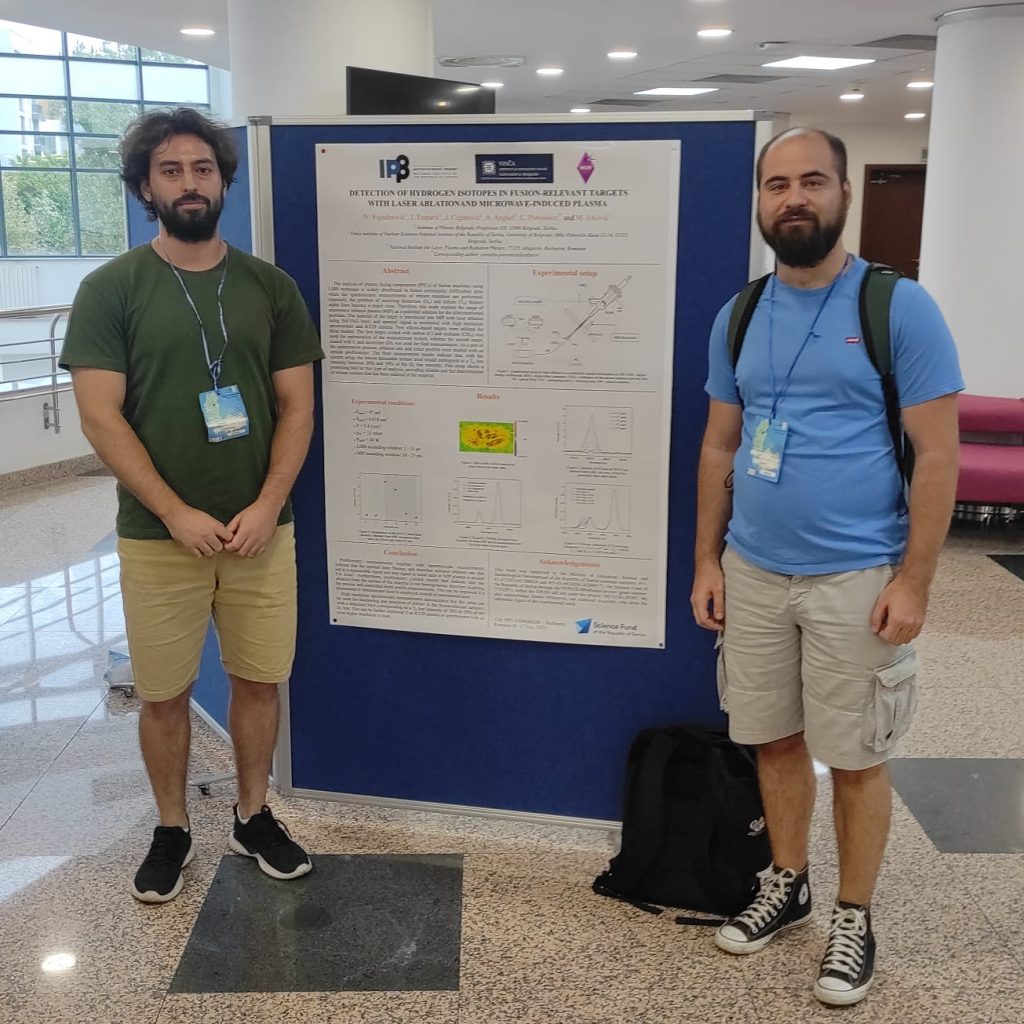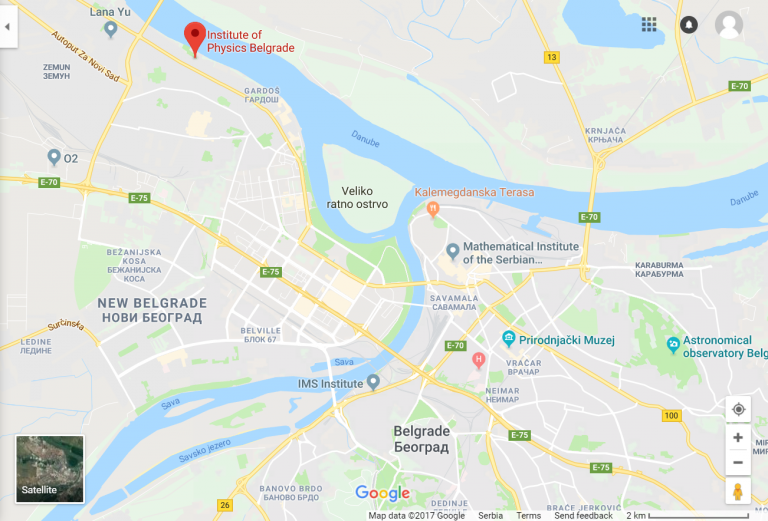
12th International Congress of the Balkan Physical Union (BPU 12) was held at National University of Science and Technology POLITEHNICA in Bucharest, Romania from 8th to 12th July 2025. Nikola and Ivan participated with a poster entitled Detection of Hydrogen Isotopes In Fusion-Relevant Targets with Laser Ablation and Microwave-Induced Plasma which is the joint work with colleagues from Low Temperature Plasma Laboratory at National Institute for Laser Plasma and Radiation Physics (INFLPR), Romania and Vinca Institute of Nuclear Sciences. Here Nikola presented part of his results obtained in pursue of his PhD thesis. Also, Nikola achieved the award for one of best 20 posters presented at the conference. The abstract of the poster is:
The analysis of plasma facing components (PFCs) of fusion machines using LIBS technique is widely distributed in fusion community. Difficulties arise when the spectroscopic measurements of tritium retention are performed, especially the problem of resolving deuterium (Dα) and tritium (Tα) Balmer alpha lines become a major issue. Therefore, this study exploits the usage of microwave induced plasma (MIP) as a potential solution for the aforementioned problem. The material of the target is introduced into MIP with laser ablation using Nd:YAG laser, and spectral signal is monitored with high resolution spectrometer and ICCD camera. Two silicon-based targets were utilized for these studies. The first target, coated with carbon (C) and methane (CH4), was used for optimization of the measurement system, whereas the second target, coated with C and deuterium (D), was used for final measurements. As a part of the optimization process, ablation rate and crater profiles were studied with an optical profilometer. The final measurement results indicate that, with the current setup, the lowest detectable tritium level would correspond to a Tα line intensity between 30% and 50% of the Dα line intensity. This setup shows a promising tool for this type of analysis, providing reliable and fast determination of tritium content that has been retained in the material.
